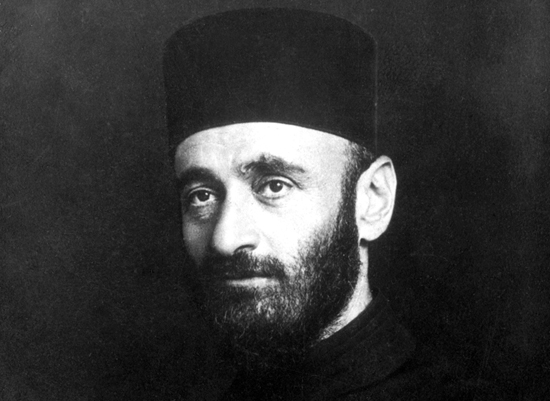Anatolia's Mozart, who introduced Europeans to Armenian music: Who is Komitas Vartabed?
The story of his life as a child with an extraordinary voice, an orphan Armenian boy, starting in Kütahya, Turkey, developing as a genius, and ending in a mental hospital in France.

Komitas i.e. Gomitas Vartabed (1869 Kütahya-1935 Villejuif Clinic France), was one of the pioneers of Armenian polyphonic classical music, composer, musician, choirmaster, and priest. He is known today as an ethnomusicologist. Komitas was the first musicologist to westernize Anatolian music.
Komidas has a magnificent voice, presenting Kurdish, Turkish, and Armenian songs he collected from nature, plains, and mountains to musical notes, polyphonic music, choirs he founded, and listeners.
Soghomon Soghomonian, ordained and commonly known as Komitas, (1869 – 22 October 1935) was an Armenian priest, musicologist, composer, arranger, singer, and choirmaster, who is considered the founder of the Armenian national school of music. He is recognized as one of the pioneers of ethnomusicology.
Komitas was exiled with 234 Armenian intellectuals on April 24, 1915. After returning from exile, he spends the rest of his life in mental hospitals and psychiatric clinics.
Armenian musician, musicologist, and priest Komitas Vartabed, born in Kütahya in 1869, lost his parents at a young age and was taken care of by his relatives. When Komitas was 12 years old, he was sent to the Armenian Church Etchmiadzin in Armenia.
Komitas, who sang hymns in church services, did not know any Armenian at that time. After completing his religious education in Etchmiadzin, Armenia, Komitas was promoted to the rank of "Vartabed", that is, "unmarried priest", and was included in the choir staff thanks to his musical talent.
With the support of Catholicos Hrimian, the highest clergyman of the Armenian Church at that time, and the Armenian businessman Mantashev, Komitas went to Germany to receive higher musical education. Here, Komitas introduced the Europeans to Armenian music.
Conducting research in the field of Armenian and Kurdish folk music, Armenian religious music, and the Armenian musical notation system known as "khaz", Komitas's adaptation of the Armenian Church's Sunday ritual using Western musical systems and notation took place during this period. Komitas' adaptation of this hymn is widely sung today.
Komitas became an important part of Armenian cultural life in Tbilisi in the Russian Empire and Istanbul, where he settled in 1910, the two largest centers of Armenian art history. In addition to his work on the performance, development, teaching and dissemination of Armenian music, Komitas also directed a 300-member choir in Istanbul.
Among the Armenian intellectuals arrested on April 24, 1915, there was Komitas. Komitas was exiled, along with other detainees, to the interior of the country, but was brought back with the intervention of influential people. His experiences in exile caused him to undergo a major change, which, according to many Armenians, could only occur as a result of losing his mental balance.
After his return from exile, Komitas stayed in a hospital in Istanbul for several years, and in 1919 he was taken to France and spent his entire life in a psychiatric hospital in Villejuif, a suburb of Paris until he died in 1935.
“He thought the trees were gendarmes”
Journalist Aram Andonian, in his book titled “On the Roads to Çankırı with Gomidas Vartabed”, describes 234 Armenian intellectuals and Komitas who were exiled to Ayaş and Çankırı.
Andonian is one of the few prisoners who managed to escape from exile in Çankırı…
The change that Komitas went through after his return from exile, in Andonian's book, is described as follows:
“A few gendarmes were shopping in the market, just like us. When Komitas bowed to them, some of us, especially those who did not know that he was having a nervous breakdown, thought he was making fun of the soldiers… Despite his calm appearance, it was obvious that he was still afraid of the gendarmes. After a while, he started to greet the strangers passing by in the same way. They looked at him in surprise, shook their heads, and walked away. It was obvious that he thought they were gendarmerie, too. He had done the same the night before. This time, he thought the trees were gendarmes. It happened while we were walking through the tunnel in the dark of night.”
